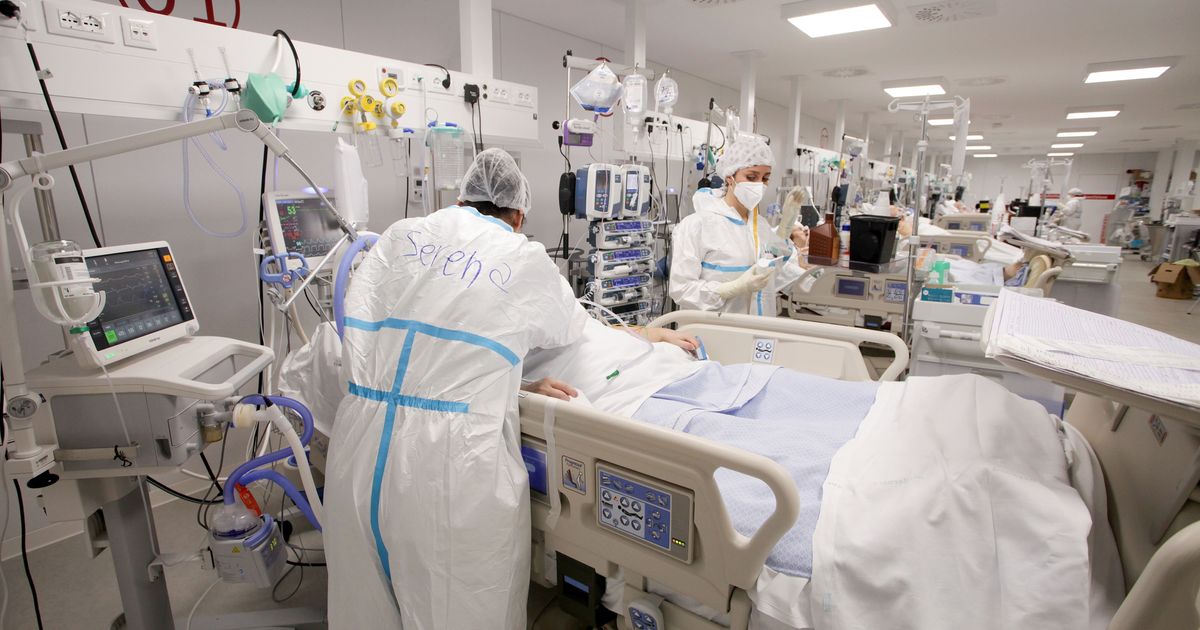Donato Fasano via Getty Images
“Milan, intensive care for the collapse of the flu: 48 seriously ill patients already. Many operations postponed “(Corriere della Sera, 10 January 2018).
“Influenza, emergency room tilt and blocked ambulances” (Ansa, 1 January 2015).
First aid, chaos throughout Italy. Stretchers, mattresses on the floor, insufficient and stressed staff “(Quotidiano Sanità, 13 January 2015).
“Emergency room on tilt, the flu emergency also knocks out hospitals” (Torino Today, 30 December 2016).
These are just a few examples of the headlines that could be read in all the newspapers in recent years, well before the Covid-19 pandemic. I remember them not to compare the current situation to that of other flu epidemics, nor to minimize or deny, as the no vax do, the severity of the Covid infection19. I have a reinforced Green pass, I have had all the recommended vaccinations, including the one against the flu and, if others have been recommended, I will certainly undergo it. I point them out to try to draw attention to the weakness of our health system and the complex of public services in our country, the result of the austerity policies of recent decades.
Even a normal flu epidemic brought the emergency rooms of our hospitals to their knees, uncovered the endemic difficulty of hospitals to admit and assist the elderly and frail, whose lives even a “normal” flu puts at risk. Even then, the current expenditure of our health system was subject to cuts, hiring was blocked, employees who retired were not replaced, except through precarious contracts and outsourcing, and the number of beds was drastically and progressively reduced. And even then we were paying the price for those policies: a trivial flu undermined the responsiveness of the system, both hospital and territorial, forced the postponement of surgical interventions and routine procedures, started the frantic search for additional beds.
Now we are faced, in a more serious and dangerous form, with the same question. The Omicron variant is perhaps no more dangerous than the previous ones, but it is more transmissible. The more infections, the more risk of putting the health system in crisis. Vaccines have proved to be fundamental in countering the first, dramatic phase of the pandemic and today they prove to be indispensable for building the conditions for living in relative safety with the virus. And if there is an urgency today, it is to extend vaccination to the whole world, to countries that cannot afford it. But vaccines are not enough. Nor is the responsibility of individuals, their capacity for self-monitoring sufficient. It can limit the risks related to recreational activities, sports, contacts that each of us can control. But nothing can the responsibility of individuals with respect to the use of public transport, school attendance, work activities. And today the services with reduced personnel risk not being able to respond to the growth of infections of their employees and quarantines.
The appeals of the principals or those of the emergency room doctors, which have been repeated continuously since the beginning of the pandemic, should make us reflect. We do not get out of the emergency only if we resume producing and consuming. And public resources cannot be used only for the resumption of production, which risks becoming a real “unhappy growth”.
The choice to reduce public spending through linear cuts that have affected essential services, a choice pursued for years and never really questioned in the years of the pandemic, presents the bill. The statement that “this is the time to give money and not take it away” must also apply to municipalities, public health, schools, commuter trains and urban transport, social services of assistance and care.
There is a responsibility that can only be public: to guarantee the greatest possible safety for people who have to face the virus and live with it: from workers and workers, to children who go to school, to the elderly and the sick who need hospitals, to people who they need assistance.
So strengthening transport, reducing the number of children in each class, strengthening the responsiveness of the public health system can only represent an absolute priority.
Buffer measures are not enough, only by way of derogation from the laws in force, to be ready to return to the “normal” scarcity or some enlargement here and there, some strictly fixed-term hiring, where the emergency is more dramatic. It is a question of building a real plan for the development and adaptation of our social infrastructures. A country’s security is not just about roads or bridges. Security also consists in the collective capacity to take care of people and their fundamental rights. Otherwise we will risk continuing to go into crisis with every variant of Covid or worse in the face of a future virus that makes the leap of species.
